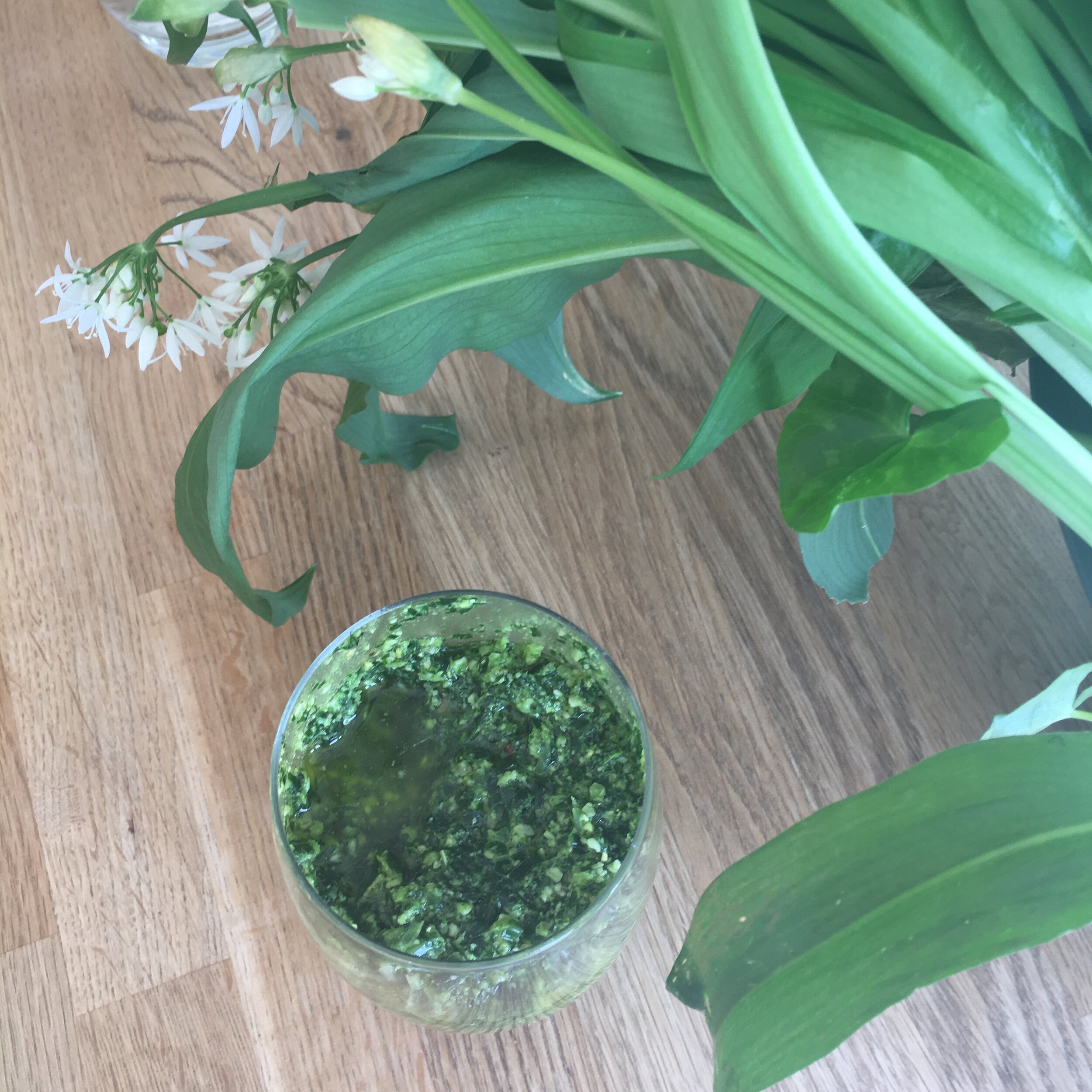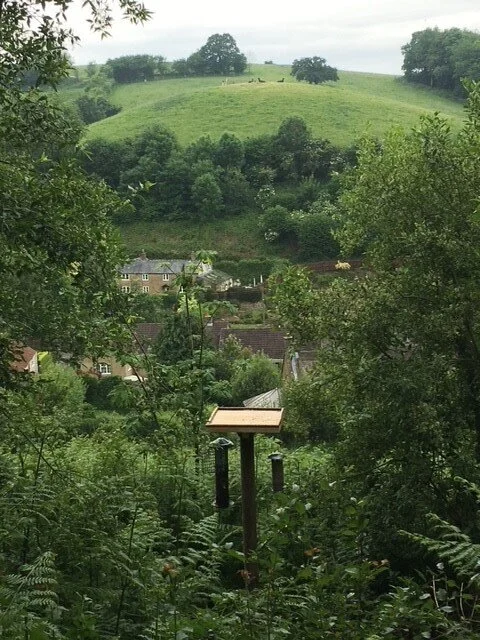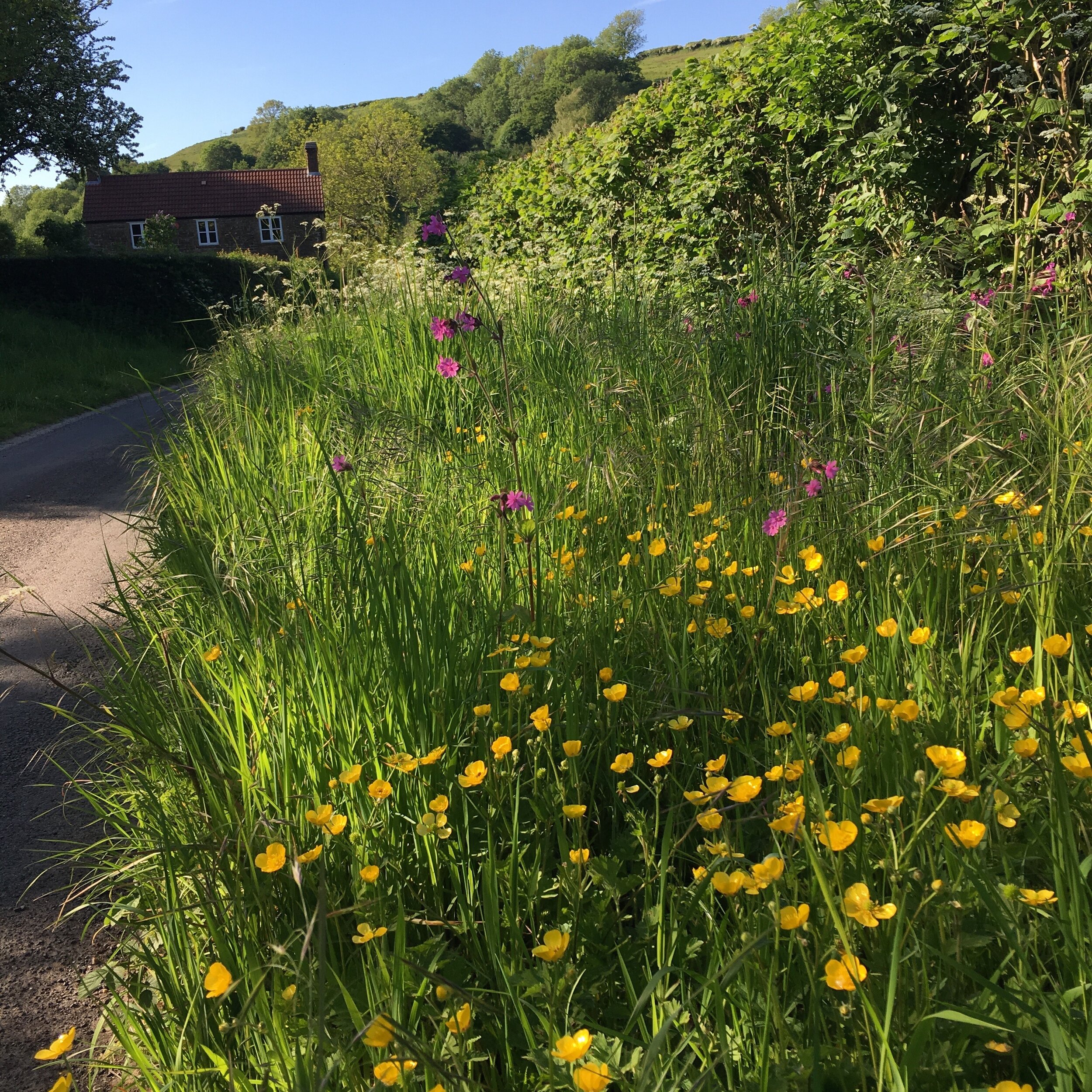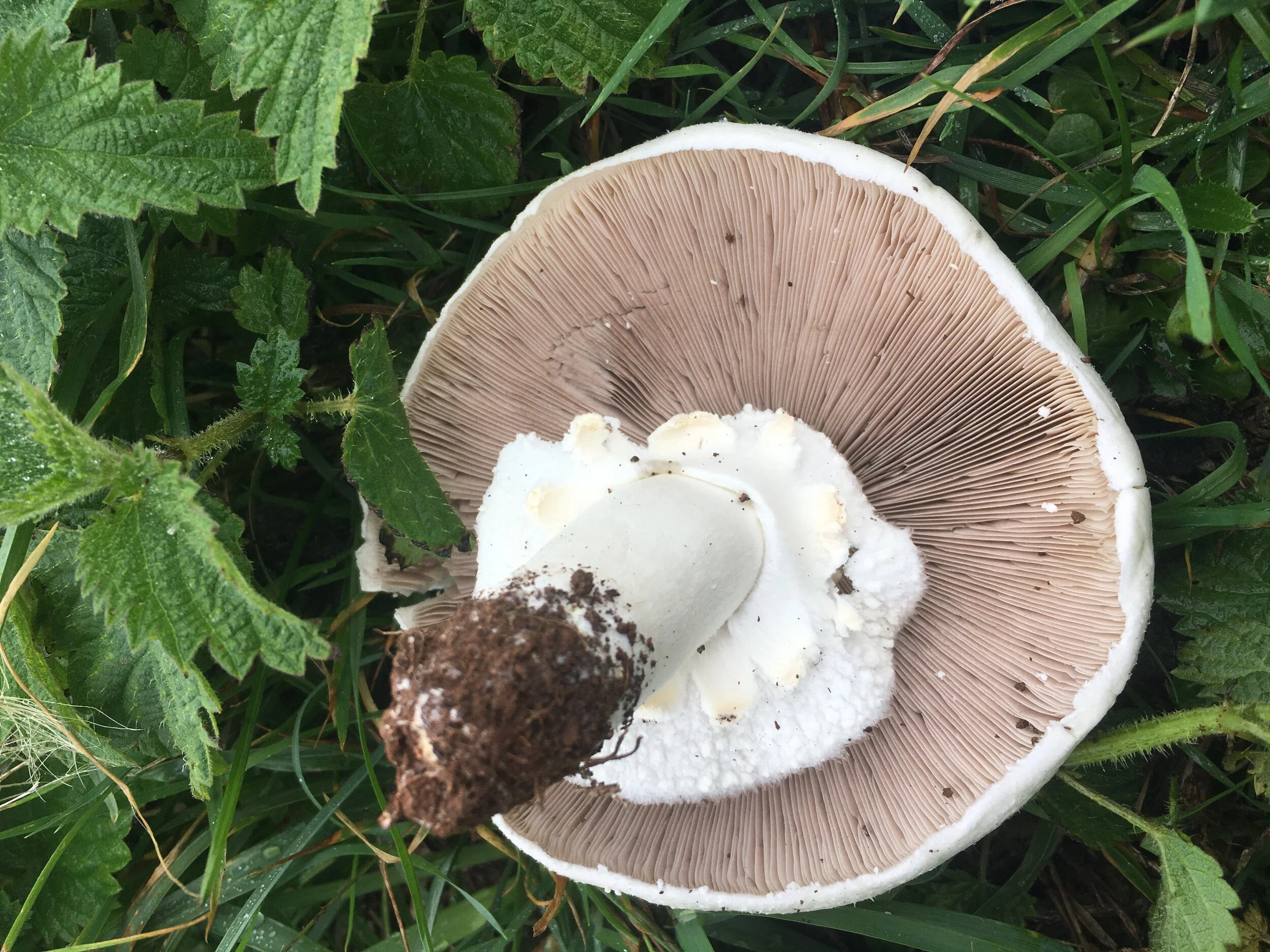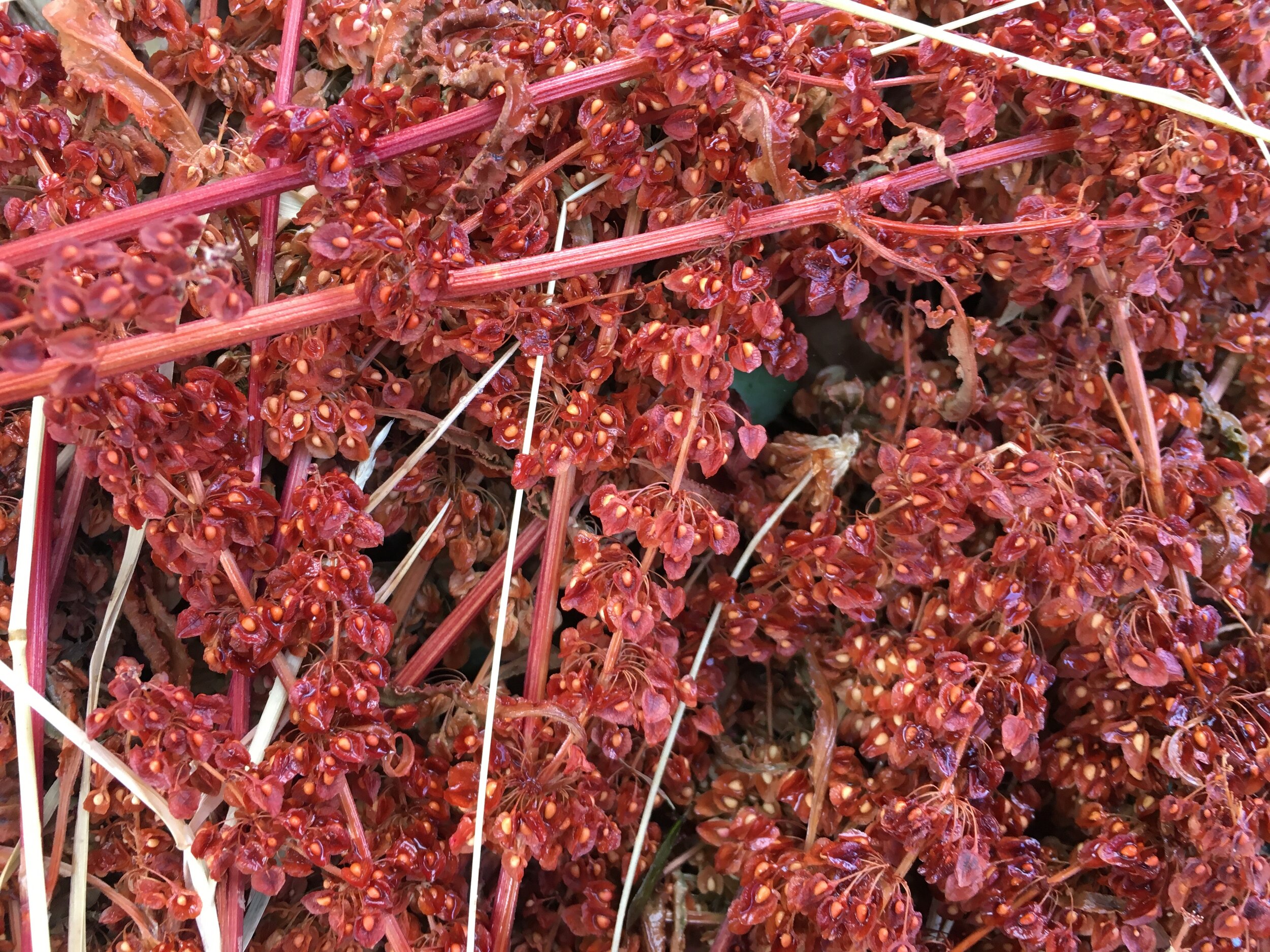
My Foraging Walks in and around Chiselborough
by Sue Hasell
I arrived in Chiselborough in 1987 and instinctively knew Fairplace Common to be a very special place.
I inherited a love of the outdoors from growing up on my parents farm in the Chew Valley. My early memories of foraging are picking field mushrooms on morning excursions bringing back the dairy cows for milking on horseback!!
I am always keen to learn about new fungi species on my walks. I photograph them and then refer to books to identify them. I recently used the black ink from the shaggy mane inky cap for drawing fungi! A useful reference source is the Field Studies Council, and Mushrooms by Roger Phillips.
Springtime Forage Walks
"Old Road "track leading from Fairplace Common is a joy to walk through especially in the early morning with bird song and fresh foliage bursting forth; the cheerful star shaped yellow celandines being one of the first delights to emerge followed by the poisonous dogs mercury, lady ferns, cuckoo pint, mosses, lichens, violets, herb robert and a scattering of bluebells and few primroses.
Did you know?
Lesser celandine are the first flowers to appear after winter providing nectar for queen bumblebees and other pollinators emerging from hibernation and early insects.
Wild Garlic Condiment
I was delighted with a new preserve using wild garlic: I picked unopened flower buds of wild garlic and made a spicy sweet vinegar concoction adding peppercorns and spices. After two weeks I used them in salads and in soups.
Wild Garlic Pesto
Blitz wild garlic leaves, Parmesan, garlic, pine nuts and lemon zest and slowly add oil. Store in jars.
Sue has provided many fascinating photos below - simply click on a photo to enlarge and view close up
Lichen
Primroses
Bluebells in wood by Bagnell Farm
Off we go
Wild garlic
Wild garlic pesto
Summer Forage Walks
There’s an abundance of berries, fruits and fresh greens but one of my favourites to forage is Meadowsweet which can be found in abundance past Creedy Bridge.
Full in flower in July and grows best in moisture along ditches, bogs and marshes.
How to use it
Leaves have pleasant cucumber flavour and flowers a scent similar to sweet almond. Both are used to flavour home made wines, teas, cordials and sorbets.
Bird table, and llamas on Penn View Hill in background
Meadowsweet
Verge of wildflowers and grasses, Primrose Cottage in background
Autumn foraging - Fungi
I am a novice forager and will only ever eat species I am familiar with. If in doubt, number one rule is “ do not touch, taste or eat! “
Puffballs
These are fairly common to find from August until October. I eagerly await for these “alien space balls” to magically appear with their pure white appearance. They grow from an invisible thread!
Recipe : Cut puffball into thick slices and dip into a seasoned egg mixture. Cook in hot butter with garlic until light brown. Serve on wholemeal bread. Delicious !
Parasols
Prolific in certain local fields. These fungi are visually stunning with a striking “snakeskin” pattern on the cap with pale cream gills and recognisable by the moveable “skirt” on the stem. It’s quite a magical sight to come across a large group or “fairy” ring of these fungi .
Field mushrooms
These are the most frequently found, recognised and widely eaten fungi. Starts off spherical , then opens out flat. The gills are deep pink eventually turn dark brown then almost black. Found in pasture land.
Dryads Saddle
I have never eaten this impressive brown scaled looking fungi. It has pores not gills, and grows in overlapping clusters and tiers on broad leaved trees. A Dryad is a mythical wood nymph! Often growing on tree trunks at above head height from May onwards but only edible when young.
Egg Puffball Breakfast
Field Mushroom, showing broken 'skirt' as fungi has grown
Field mushroom: showing small button size to full cap
Forage Harvest! - with puffball, elderberries, mint, sloes, hazlenuts & apple
Puffball on Chiselborough Hill
Sliced Puffball
Shaggy Parasol
Dryads Saddle
Autumnal red dock stems
Berries ..like a necklace
Young Shaggy Parasols
Shaggy parasol with skirt on stem
Personally, I find walking in the countryside a thrilling adventure and feel privileged to witness wonderful sightings of birds, insects and mammals. It’s the unusual and unexpected that makes walking such great fun plus people you meet on your journey.
Foraging is a added bonus returning home with “free foods” to make into preserves, drinks and pies.
There’s a minefield of ever ending species to learn about and hopefully consume!
How about some exploratory “foraging “ walks next year? Anyone interested?
Sue Hasell - 07746 404 476
Important disclaimer
By viewing this website you agree that the owner of this website accepts no liability for any injury or death occurring as a result of ingesting or exposure to any mushroom or fungi described or listed on this website, and is not responsible for any decision made by anyone on the basis of the site's web pages.
SOME WILD PLANTS AND MUSHROOMS IN THE UK ARE DEADLY POISONOUS. You use the content in this website at your own risk.
Consider also there are people who are allergic to all species of mushrooms. Even when you know a mushroom well, weather conditions or animal damage can cause differences in appearance that could lead to misidentification. When foraging for wild food, you must be able to correctly identify what you are picking, otherwise you should not eat it. Never eat any wild food without multiple sources of positive identification – do not eat any wild plants or mushrooms just from viewing this website page.
With regards to UK and Local Bylaws that affect foraging: It is illegal to dig up any kind of root growing anywhere in the UK unless you have the landowner’s permission; you are not allowed to uproot anything you may be picking from either.





